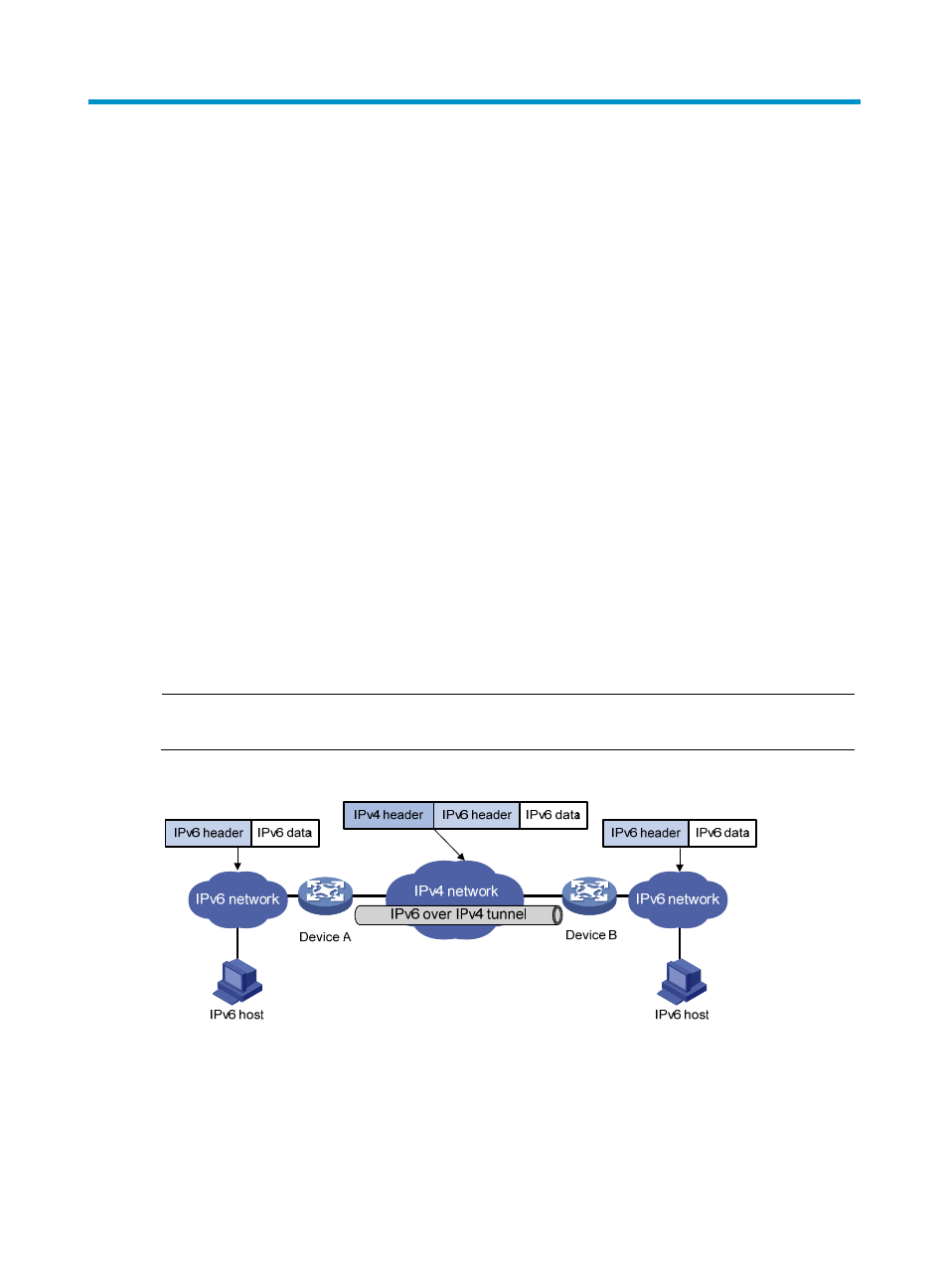Ipv6 path mtu discovery, Configuring tunneling, Overview – H3C Technologies H3C S12500 Series Switches User Manual
Page 168: Ipv6 over ipv4 tunneling

155
21B
Configuring tunneling
150B
Overview
Tunneling is an encapsulation technology. One network protocol encapsulates packets of another
network protocol and transfers them over a virtual point-to-point connection. The virtual connection is
called a tunnel. Packets are encapsulated at the tunnel source end and de-encapsulated at the tunnel
destination end. Tunneling refers to the whole process from data encapsulation to data transfer to data
de-encapsulation.
Tunneling supports the following technologies:
•
Transition techniques, such as IPv6 over IPv4 tunneling, to interconnect IPv4 and IPv6 networks.
•
VPN, such as IPv4 over IPv4 tunneling, IPv4/IPv6 over IPv6 tunneling, GRE, DVPN, and IPsec
tunneling.
•
Traffic engineering, such as MPLS TE to prevent network congestion.
Unless otherwise specified, the term tunnel in this document refers to IPv6 over IPv4 tunnels.
305B
IPv6 over IPv4 tunneling
409B
Implementation
IPv6 over IPv4 tunneling adds an IPv4 header to IPv6 packets so that IPv6 packets can pass an IPv4
network through a tunnel to realize interworking between isolated IPv6 networks, as shown in
798H
Figure 63
.
NOTE:
The devices at the ends of an IPv6 over IPv4 tunnel must support the IPv4/IPv6 dual stack.
Figure 63 IPv6 over IPv4 tunnel
The IPv6 over IPv4 tunnel processes packets in the following steps:
1.
A host in the IPv6 network sends an IPv6 packet to Device A at the tunnel source.
2.
After determining according to the routing table that the packet needs to be forwarded through the
tunnel, Device A encapsulates the IPv6 packet with an IPv4 header and forwards it through the